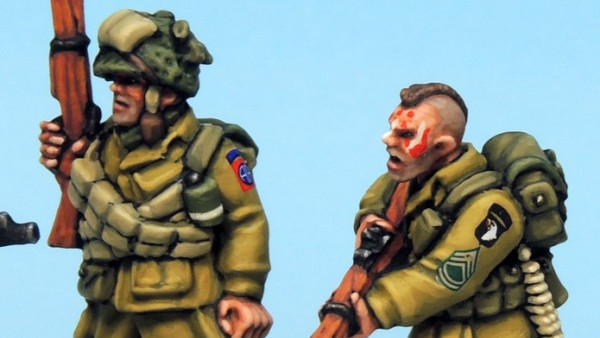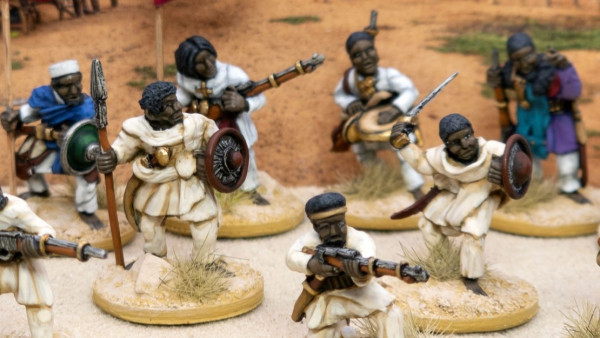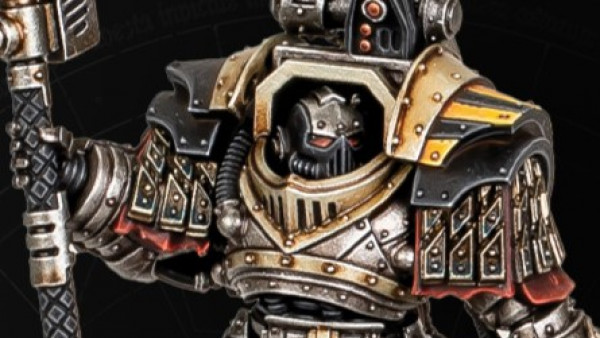Home › Forums › Painting in Tabletop Gaming › Airbrushing and a Dry Nib
This topic contains 9 replies, has 7 voices, and was last updated by ![]() panzerkaput 3 years, 9 months ago.
panzerkaput 3 years, 9 months ago.
-
AuthorPosts
-
March 23, 2021 at 2:28 pm #1625694
Hi guys
I have yet another question about airbrushing and what to do with a dry nib?
I am still learning about using an airbrush can I noticed today that paint was drying on the end of my nib and interrupting the flow of the paint.
Why does this happen?
And what can be done to stop it happen?
March 23, 2021 at 3:16 pm #1625723hi @panzerkaput, it is a natural process of air and paint passing over the tip of the needle. The best ways I know of reducing the effect is to ensure my needle is regularly cleaned of deposits that paint can attach to and lubricated (I use the blue Iwata lubricant oil). The other thing is to add a couple of drops of flow improver to your paint mix. It seems to help me. Other than that, just remember to clean the tip off carefully with your finger tips when you stop to refill, or change to a new piece, to keep it to a minimum. Hope that helps.
March 23, 2021 at 3:17 pm #1625724Try Badger needle juice. I pull the needle to apply it. Just a drop. I also add a drop of flowaid to the cup. Happens most often with white as it has the most pigment. I also mix the paint with the flowaid in the cup by holding the needle and giving a gentle spray. Be sure to point the cup away from anything that might get spattered with paint.
March 23, 2021 at 6:12 pm #1625836Keep a piece of tissue handy, apply thinners, retract needle, now gently allow needle to go forward into tissue/thinners.
The best remedy though is properly thinned paint and a drop of flow aid.
March 23, 2021 at 9:26 pm #1625926as others have said keep it clean, have a rag/paper towel handy with water or cleaner preferably an wipe between each model blowing just some air to prevent any dry particles entering the gun as you wipe the nib.
March 23, 2021 at 10:03 pm #1625928Thanks there guys so its just one of those things
March 23, 2021 at 10:18 pm #1625936Well, I almost exclusively use heavily thinned Tamiya paints, and don’t seem to have a problem, or at least not nearly as much as with other brands.
March 24, 2021 at 3:47 pm #1626134When you thin your paints to a higher degree it will happen less. You also can add drying retarder. It wont eliminate the issue entirely though.
If it happens so regularly you feel hindered I guess your paints arent thin enough anyways.
Just keep something to clean around and make a habbit of keeping the tip clean.
March 25, 2021 at 5:54 pm #1626439In addition to the above comments which all seem reasonable you can try and use a different technique when airbrushing which is more like most airbrush canvas artists use when using double action airbrushes. That’s to keep the air flowing at all times until done.
Dry nib occurs when paint builds up on the tip and dries. This happens often for miniature painters as we paint such small things, starting and stopping a lot . Also this happens even more for beginners as there is a lot more starting and stopping.
Keeping the air flow going and introducing paint when required stops the spirt of paint you get after stopping and starting and keeps the tip clear of paint that would normally dry.
To do this keep the trigger held down so constant air and only pull back when you want paint and return when you don’t. This takes practice and I would say I try to do this, but only manage about 25% of the time. The rest of the time I let air flow then paint flow then no paint then no air which is a variation of this. You want to avoid stopping air and paint at the same time of the residual paint will still be coating the needle. All happens in about 1 – 2 seconds but I am sure you can find a you tube video on it that would explain better.
There are times when this is not a good idea but it takes practice to know when to use what technique and this can work the majority of the time.
I took an airbrush class when I was younger and you got smacked with a ruler if the tutor if he couldn’t hear air from your airbrush. Sounds kinky, but just unpleasant. That’s also why I used a single action airbrush for years.
March 25, 2021 at 10:51 pm #1626658Thanks there @soapdodger for the tip and will give it try
-
AuthorPosts
You must be logged in to reply to this topic.







































































